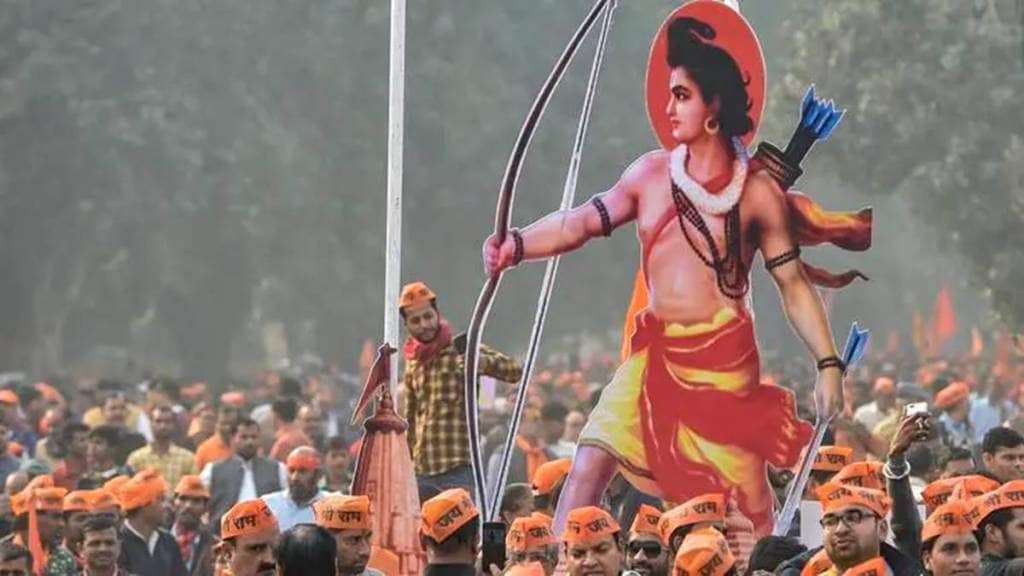Widely believed to be the first to have waged a war against the Mughals for “bringing down the Ram Temple and building the Babri Masjid” at the Ram Janmabhoomi, the Suryanvanshi Thakurs of Ayodhya are finally set to end a vow that their ancestors took five centuries ago.
The community that claims to be the descendants of Lord Ram is spread across over 100 villages in the Ayodhya and Basti districts of Uttar Pradesh, the Suryavanshi Thakurs had taken a vow that they won’t don a pagdi (turban) or wear leather footwear or use umbrellas until the liberation of the Ram Janmabhoomi, that is till a Ram Temple is constructed at the same site. The vow, the community members claim, was taken just before they decided to launch an offensive against the Mughal army.
Also Read: Ayodhya Ram Mandir Inauguration: Date, time and schedule of event | Check all details here
The community members claim that around 90,000 of their ancestors waged a war against Mughal emperor Babur whose commander Mir Baqi demolished an ancient temple of Lord Ram at the site believed to be the Ram Janmabhoomi and built a mosque that came to be known as the Babri Masjid.
Five hundred years, a mosque demolition, and a Supreme Court verdict later, the stage is now set for the opening of the Ayodhya Ram Temple and, with it, for the Sooryavanshi Thakurs to don their turbans and leather slippers once again. The Supreme Court’s 2019 verdict, ruling that the disputed land belonged to the Hindu side, paved the way for the construction of the Ram Temple on the same site where the Babri Masjid stood since its construction in 1528-29 till it was brought down by karsevaks on December 6, 1992.
Also Read: Congress’ boycott of Ram Temple inauguration politically damaging, defies logic
Lore has it that a total of 76 battles were fought for the liberation of the Ram Janmabhoomi between the Mughal era and the British rule. Of these, Suryavanshi Thakurs fought Baqi’s army 29 times till the martyrdom of Gajraj Singh during the 30th offensive in the 16th century. Eventually, the houses of Gajraj Singh and Ram Avatar, at the forefront of the war, were brought down by the Mughals using a cannon.
Community members claim that their forefathers fought the powerful Mughal army despite knowing they were on the weaker side. However, they felt compelled as the descendants of Lord Ram. The idea behind the refusal to use an umbrella during marriages etc was because their ancestor (Lord Ram’s idol) was without a cover over his head.
Also Read: Rituals begin at Ram Temple ahead of consecration ceremony in Ayodhya
‘Khadhau‘ made of wood replaced leather footwear. ‘Gamchha‘ or the ‘mauri‘ — that keeps the head bare — replaced the turban and women refused to use ‘chhatris’. Even during the demolition of the Babri Masjid where community members helped karsevaks who had arrived in Ayodhya, provided them food and shelter and even safe passage to the Babri Masjid site to evade police action.
Ahead of the ‘Pran Pratishtha’, the community members will converge at the Surya Kund, the same spot where their ancestors took the vow 500 years ago, to offer umbrellas to their kuldevta and wear the pagdi, drawing to a close their 500-year-old struggle and the fulfillment of the vow their forefathers took for the Ram temple.

